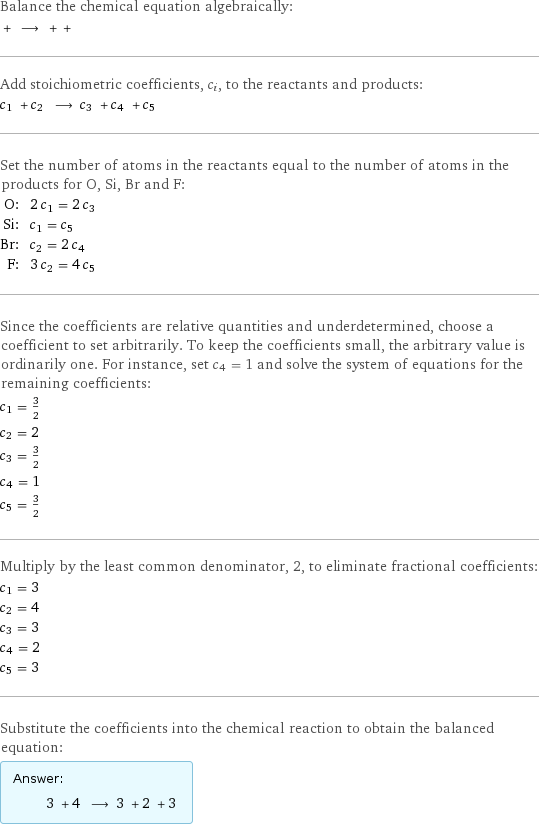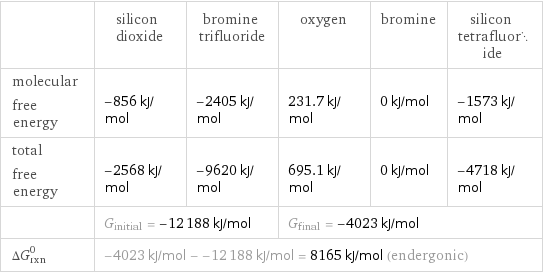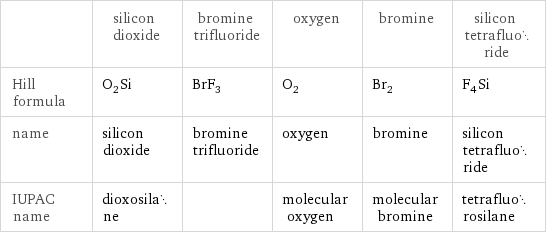Input interpretation

silicon dioxide + bromine trifluoride ⟶ oxygen + bromine + silicon tetrafluoride
Balanced equation

Balance the chemical equation algebraically: + ⟶ + + Add stoichiometric coefficients, c_i, to the reactants and products: c_1 + c_2 ⟶ c_3 + c_4 + c_5 Set the number of atoms in the reactants equal to the number of atoms in the products for O, Si, Br and F: O: | 2 c_1 = 2 c_3 Si: | c_1 = c_5 Br: | c_2 = 2 c_4 F: | 3 c_2 = 4 c_5 Since the coefficients are relative quantities and underdetermined, choose a coefficient to set arbitrarily. To keep the coefficients small, the arbitrary value is ordinarily one. For instance, set c_4 = 1 and solve the system of equations for the remaining coefficients: c_1 = 3/2 c_2 = 2 c_3 = 3/2 c_4 = 1 c_5 = 3/2 Multiply by the least common denominator, 2, to eliminate fractional coefficients: c_1 = 3 c_2 = 4 c_3 = 3 c_4 = 2 c_5 = 3 Substitute the coefficients into the chemical reaction to obtain the balanced equation: Answer: | | 3 + 4 ⟶ 3 + 2 + 3
Structures

+ ⟶ + +
Names

silicon dioxide + bromine trifluoride ⟶ oxygen + bromine + silicon tetrafluoride
Reaction thermodynamics
Gibbs free energy

| silicon dioxide | bromine trifluoride | oxygen | bromine | silicon tetrafluoride molecular free energy | -856 kJ/mol | -2405 kJ/mol | 231.7 kJ/mol | 0 kJ/mol | -1573 kJ/mol total free energy | -2568 kJ/mol | -9620 kJ/mol | 695.1 kJ/mol | 0 kJ/mol | -4718 kJ/mol | G_initial = -12188 kJ/mol | | G_final = -4023 kJ/mol | | ΔG_rxn^0 | -4023 kJ/mol - -12188 kJ/mol = 8165 kJ/mol (endergonic) | | | |
Chemical names and formulas

| silicon dioxide | bromine trifluoride | oxygen | bromine | silicon tetrafluoride Hill formula | O_2Si | BrF_3 | O_2 | Br_2 | F_4Si name | silicon dioxide | bromine trifluoride | oxygen | bromine | silicon tetrafluoride IUPAC name | dioxosilane | | molecular oxygen | molecular bromine | tetrafluorosilane